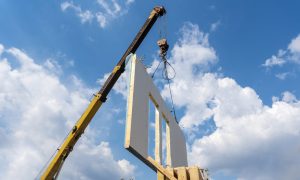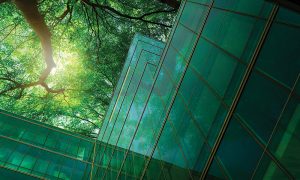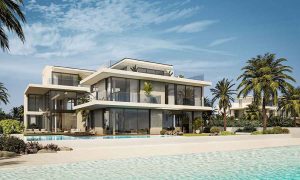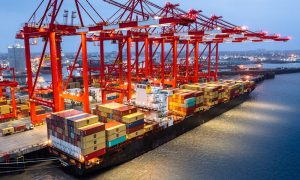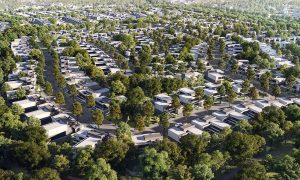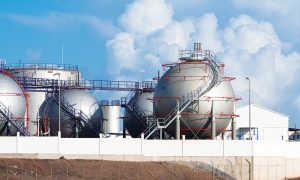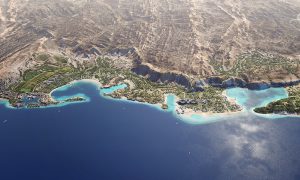Art of Living Mall: The Consultant’s Role
LACASA Architects and Engineering Consultants on designing a unique retail experience

How did LACASA go about designing and planning the Art of Living Mall?
The client requested an iconic building that would attract customers from nearby and further away. We had the task of creating a unique design that differs from other retail experiences while also standing out from the crowded industrial area, without losing that raw expression that we find in nearby warehouses.
Our team worked on a contemporary museum-like experience and language, made up of glass, aluminium cladding, steel and polished concrete walls. The massing is expressed, with a blank concrete wall covered with an architectural LED mesh screen to display advertising during the night and a simple roof with cut-outs. Furniture design was used as a concept, with the building being ‘wrapped’ like upholstery.
The façade’s only glass mass is used to highlight the entrances to the mall, while visitors will be drawn in by eye-catching fragmented structures made from steel and lightweight aluminium louvers. These freeform structures surround the two main entry masses as a ‘Jubilation of Art’. The wavy forms play the role of strong urban signals in a busy site surrounded by highways.
The entrances open into triple-height lobbies, with fluid internal circulation routes to encourage a voyage of discovery around attractive landscaped interiors. The two big cylinders defining the entrance are emptied from inside and topped with skylights. The urban visual entities play the same role inside the project, as a space articulating vertically and horizontally the circulation of shoppers inside.
What were the biggest challenges you faced on the project?
- The large span of skylights needed a special steel structure that had to be lightweight as well. We chose a space frame system.
- The space frame system needed a rigid boundary supporting element. We used pre-engineered box sections supported on vertical columns and vertical trusses.
- The full glazing of entrance elevations meant providing brackets from concrete elements to support major ring beams.
- The free form structure needed to be pin supported on the main elevation vertical elements without affecting main structure stability or elevation view.
- The steel structure on the roof needed comprehensive coordination among architectural, structural, MEP, waterproofing and ID disciplines.
- The interface locations between the concrete structure and the steel framing systems were a challenge to achieve structural integrity without affecting the beauty of the project elevations or the height of the internal space.
How did you work with Airolink to map out the construction programme for the project?
LACASA and Airolink worked hard to establish and develop an effective construction programme by adopting a primary emphasis on time and cost control. This involved the choice of technology for the smooth operation, the definition of work tasks, the estimation of the required resources and durations for individual activities, and the identification of any interactions among the different work tasks.
The project went through various stages during the construction period, from initiation, planning, scheduling and coordinating to executing, monitoring and controlling project activities to reach the closure stage.
LACASA made great efforts to enhance the support efficiency to facilitate the project requirements, executing multiple operations through proper coordination and control of planning, design, estimating and construction in the complete process, as well as generating efficient communications and mechanisms with all parties for resolving conflicts and using all available organisation resources to reach desirable achievements.

